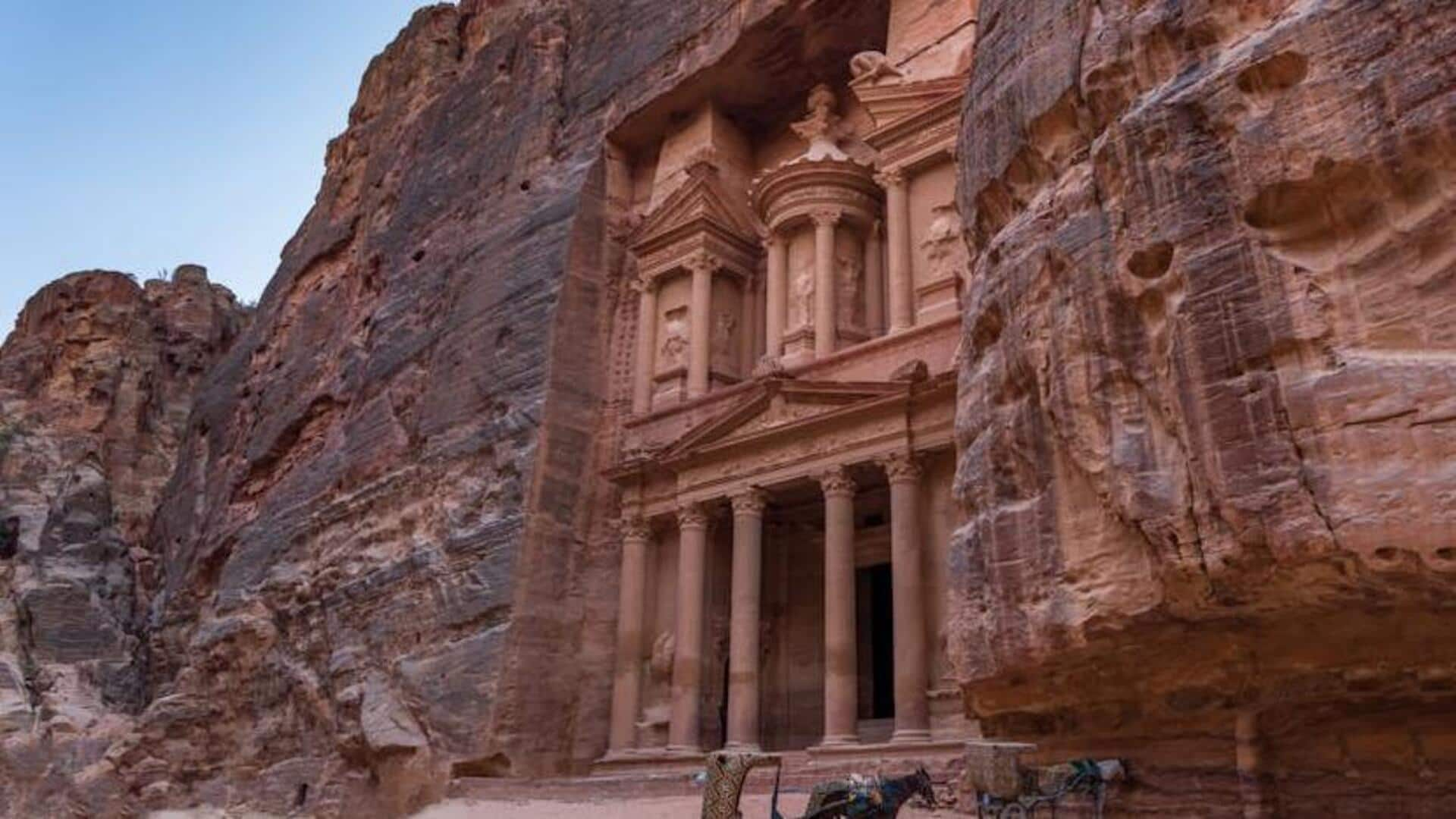
Exploring the ancient marvels of Petra, Jordan
What's the story
Petra, an archaeological gem in Jordan, invites travelers to step back in time. This ancient city, carved into red sandstone cliffs more than 2,000 years ago by the Nabateans, is a testament to human ingenuity and creativity. From its iconic entrance through the Siq to its majestic tombs and temples, Petra offers a journey through history that is both awe-inspiring and humbling.
Al-Khazneh
The Majestic Treasury
The Treasury, or Al-Khazneh, is Petra's iconic monument, welcoming visitors from the Siq. It is believed to be a mausoleum or crypt from the first century A.D. Its facade, standing at about 40 meters high, suggests it was not used for storing wealth. This structure captivates with its Hellenistic architectural influences, showcasing enduring beauty and craftsmanship.
Ad-Deir
The Grand Monastery
Perched above Petra, Ad-Deir, or The Monastery, is reached by climbing over 800 steps. It's larger than the Treasury, at 50 meters wide and 45 meters tall, likely serving for religious gatherings. Its secluded location offers tranquility and stunning views. This remote spot rewards visitors with a serene atmosphere away from Petra's main paths, making the ascent worthwhile for breathtaking scenery.
Ancient boulevard
The Colonnaded Street
Walking down Petra's Colonnaded Street transports visitors back to a bustling ancient city center, lined with columns on either side. This once-commercial hub was framed by temples, public buildings, and markets that showcased Nabatean engineering prowess and their ability to integrate Roman influences into their architecture. Although much has been eroded by time and earthquakes, enough remains to imagine its past splendor.
Kings' resting places
The Royal Tombs
The Royal Tombs of Petra stand majestically along the valley's face and are among its most striking architectural wonders due to their grand facades carved directly into the cliffside. These include the Urn Tomb, Silk Tomb, Corinthian Tomb, and Palace Tomb—each unique in design but all serving as monumental resting places for Nabatean royalty or nobility.
Sacred Altar
The High Place of Sacrifice
For those venturing beyond Petra's main paths, the High Place of Sacrifice on Jebel Madbah hill is significant. Used for religious ceremonies, including animal sacrifices, it features an altar from solid rock. Offering panoramic views of Petra, this site combines physical effort with contemplation. It connects visitors to ancient spiritual practices, making the ascent a profound experience.